When managing diabetes, every dietary choice matters. Superfood smoothies can be an excellent way to pack a powerful punch of nutrients while keeping blood sugar levels in check. Let's dive into the world of diabetic-friendly smoothies, explore the benefits of key ingredients, and discover delicious recipes that will tantalize your taste buds and nourish your body.
Understanding Diabetes and Dietary Needs
Diabetes is a chronic condition that affects how your body processes glucose, a type of sugar that serves as the primary source of energy for your cells. In type 1 diabetes, the body doesn't produce enough insulin, a hormone that regulates blood sugar levels. In type 2 diabetes, the body becomes resistant to insulin or doesn't produce enough of it. Both types can lead to elevated blood sugar levels, which can cause serious health complications if left unmanaged.
The Importance of a Balanced Diet
A well-balanced diet plays a crucial role in managing diabetes. It's essential to focus on foods that are low in carbohydrates and added sugars, as these can cause spikes in blood sugar. Additionally, including plenty of fiber-rich foods, lean protein, and healthy fats helps promote stable blood sugar levels and overall well-being. Superfood smoothies can be an excellent way to incorporate these essential nutrients into your daily routine.
Superfoods for Diabetic-Friendly Smoothies
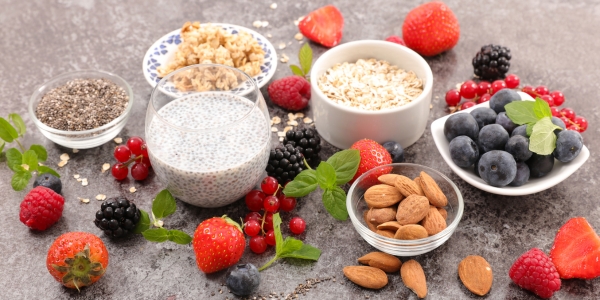
Superfoods are nutrient-dense foods that offer a wide array of health benefits. When choosing ingredients for your diabetic-friendly smoothies, focus on those that are low in carbohydrates, high in fiber, and packed with vitamins, minerals, and antioxidants.
Leafy Greens
Leafy greens like spinach, kale, and Swiss chard are low in calories and carbohydrates but high in fiber, vitamins, and minerals. They're also rich in antioxidants, which help protect your cells from damage.
Berries
Berries such as strawberries, blueberries, raspberries, and blackberries are packed with antioxidants and fiber. They're also relatively low in carbohydrates compared to other fruits, making them a great addition to diabetic-friendly smoothies.
Nuts and Seeds
Nuts and seeds like almonds, walnuts, chia seeds, and flaxseeds are excellent sources of healthy fats, protein, and fiber. They can help you feel full and satisfied, preventing blood sugar spikes.
Avocado
Avocado is a creamy fruit that's rich in healthy fats, fiber, and potassium. It adds a luxurious texture to smoothies and helps stabilize blood sugar levels.
Greek Yogurt
Greek yogurt is a good source of protein and calcium. It also contains probiotics, which are beneficial bacteria that support gut health. Opt for plain, unsweetened Greek yogurt to avoid added sugars.
Crafting the Perfect Diabetic-Friendly Smoothie

When creating your smoothies, it's important to strike the right balance of nutrients. Aim for a combination of leafy greens, berries, nuts or seeds, a source of protein like Greek yogurt, and a healthy fat like avocado. You can also add spices like cinnamon or ginger for flavor and additional health benefits.
Tips for Success
- Use frozen fruit: Frozen fruit creates a thicker, more refreshing smoothie.
- Add liquid gradually: Start with a small amount of liquid and add more as needed to reach your desired consistency.
- Don't overdo it on the fruit: While fruit is healthy, it still contains natural sugars. Stick to a ½ cup to 1 cup serving of fruit per smoothie.
- Experiment with flavors: Try different combinations of fruits, vegetables, and spices to find your favorite recipes.
Top 20 Diabetic-Friendly Superfood Smoothie Recipes

1. Low Carb Green Smoothie
This smoothie combines cilantro and avocado with a splash of lime juice, providing a rich source of fiber and healthy fats that help regulate blood sugar levels. With only 4 grams of net carbs, it keeps carbohydrate intake minimal while offering essential nutrients.
2. Raspberry Avocado Smoothie
Using water and lime juice instead of unsweetened milk, this smoothie reduces carbohydrate content. The addition of ice cubes makes it a refreshing, dairy-free option rich in vitamin C, which supports immune health and helps maintain stable blood sugar levels.
3. Strawberry Coconut Milk Smoothie
Perfect for a quick breakfast, this smoothie features almond butter for a creamy texture and strawberries for antioxidants and fiber. These ingredients help control blood sugar spikes and keep you feeling full longer.
4. Matcha Green Tea Smoothie
This smoothie utilizes stevia and unsweetened coconut milk to minimize carbs while providing the antioxidant benefits of green tea. It offers a natural energy boost without causing blood sugar fluctuations.
5. Strawberry Avocado Smoothie
A dairy-free and low-carb option, this smoothie is ideal for on-the-go lifestyles. Avocado adds healthy fats that stabilize blood sugar levels, making it a nutritious choice for a busy day.
6. Berry Mini Cheesecake Smoothie
Light and refreshing, this smoothie is perfect for breakfast or a midday snack. Berries provide antioxidants and fiber, which help maintain steady blood sugar levels and support overall health.
7. Dark Chocolate Protein Smoothie
Rich and chocolaty, this smoothie includes a scoop of protein powder to enhance satiety and stabilize blood sugar. The high protein content helps keep you full and supports muscle maintenance.
8. Mint Chocolate Green Smoothie
Packed with protein and nutrients, this smoothie tastes like a mint chocolate chip milkshake without the added sugars. Using sugar-free chocolate chips and stevia keeps the carbohydrate content low, making it suitable for blood sugar management.
9. Raspberry Cheesecake Smoothie
Enjoy the delicious flavor of raspberry cheesecake in a healthy smoothie. This sugar-free recipe is low in carbohydrates and high in fiber, helping to control blood sugar levels while satisfying your sweet tooth.
10. Watermelon Smoothie
A highly refreshing and low-carb beverage, this smoothie is perfect for summer. Watermelon’s high water and fiber content aid in hydration and help regulate blood sugar levels effectively.
11. Blueberry Smoothie
This fast and easy smoothie combines healthy fats, protein, and blueberry antioxidants. It’s suitable for a low-carb, diabetic-friendly diet, providing essential nutrients without causing blood sugar spikes.
12. Best Low Carb Green Smoothie
Featuring fresh spinach and optionally adding frozen strawberries or blueberries for natural sweetness, this smoothie is rich in fiber and vitamins. It supports metabolism and helps maintain stable blood sugar levels.
13. Chocolate Peanut Butter Smoothie
When craving something sweet, this smoothie offers a protein and healthy fat-packed option. Peanut butter provides a creamy texture and helps stabilize blood sugar, making it a satisfying treat.
14. Salted Caramel Pumpkin Smoothie
With the rich flavors of fall, this smoothie is a healthy snack or dessert option. Pumpkin adds fiber and vitamins, aiding in blood sugar control and providing essential nutrients.
15. Strawberry Spinach Smoothie
A creamy and quick breakfast option, this smoothie blends strawberries and spinach to deliver fiber and vitamins essential for maintaining healthy blood sugar levels throughout the day.
16. Peanut Butter Cookie Dough Smoothie
A low-carb version of a popular treat, this smoothie offers a unique flavor without negatively impacting blood sugar. Using sugar-free ingredients helps keep carbohydrates in check while providing a delicious taste.
17. Blueberry Cheesecake Smoothie
Thick, rich, and creamy, this smoothie is perfect for breakfast or dessert. Blueberries add antioxidants and fiber, which help regulate blood sugar and support overall health.
18. Chocolate Coconut Smoothie
A healthy breakfast option, this smoothie includes healthy fats from avocado and coconut cream. These fats promote satiety and help maintain stable blood sugar levels until your next meal.
19. Lemon Cheesecake Smoothie
This smoothie offers a refreshing lemon flavor with a good balance of protein and healthy fats. It supports blood sugar regulation and provides a delightful start to your day.
20. Kale Coconut Shake
A refreshing green smoothie that combines kale and coconut for a nutrient-dense option. Rich in fiber and vitamins, it helps regulate blood sugar levels and promotes overall wellness.
The Benefits of Superfood Smoothies for Diabetes Management
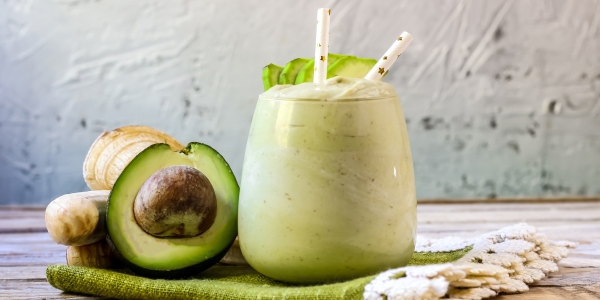
Superfood smoothies offer numerous benefits for people with diabetes.
Blood Sugar Control
The combination of fiber, protein, and healthy fats in these smoothies helps slow down the absorption of glucose into the bloodstream, preventing blood sugar spikes.
Weight Management
Superfood smoothies can be a satisfying and nutritious meal replacement or snack, helping you manage your weight and reduce your risk of diabetes complications.
Improved Heart Health
The antioxidants, fiber, and healthy fats in these smoothies contribute to a healthy cardiovascular system, which is particularly important for people with diabetes who are at an increased risk of heart disease.
Boosted Energy Levels
The vitamins, minerals, and natural sugars in superfood smoothies provide a sustained source of energy, helping you feel your best throughout the day.
Enhanced Nutrient Intake
Superfood smoothies are an easy and delicious way to pack a variety of essential nutrients into your diet, supporting overall health and well-being.
Incorporating Smoothies into Your Diabetic Meal Plan
Superfood smoothies can be a valuable addition to your diabetic meal plan. You can enjoy them for breakfast, as a snack, or even as a light lunch or dinner. Just be sure to factor in the carbohydrate content of your smoothie and adjust your other meals accordingly.
Consulting Your Healthcare Professional
Before making any significant changes to your diet, it's crucial to consult with your healthcare professional or a registered dietitian. They can help you create a personalized meal plan that meets your individual needs and supports your diabetes management goals.
Conclusion
Superfood smoothies offer a delicious and nutritious way to support your diabetes management journey. By choosing the right ingredients and crafting balanced recipes, you can enjoy these refreshing drinks while keeping your blood sugar levels in check. Remember to consult with your healthcare professional for personalized guidance and embrace the power of superfood smoothies to nourish your body and enhance your overall well-being.
Remember: It's essential to be mindful of portion sizes and the overall carbohydrate content of your smoothies. If you have any concerns about incorporating smoothies into your diabetic meal plan, consult with your healthcare professional or a registered dietitian.
Disclaimer: This article is intended for informational purposes only and should not be considered a substitute for professional medical advice. Always consult with your healthcare professional before making any changes to your diet or exercise routine.
References
- Effect of a low-intensity intervention with a Mediterranean-style diet and physical activity in the community on weight loss and cardiovascular risk factors
- Dietary fiber for the treatment of type 2 diabetes mellitus
- The effect of fruit on glycemic control in type 2 diabetes mellitus
- Effect of Nut Consumption on Blood Lipid Levels
- Avocado consumption and risk factors for heart disease
- The effect of nuts on glycemic control in type 2 diabetes
- Effect of Dietary Pulse Intake on Body Weight
- Associations of dairy product consumption with mortality
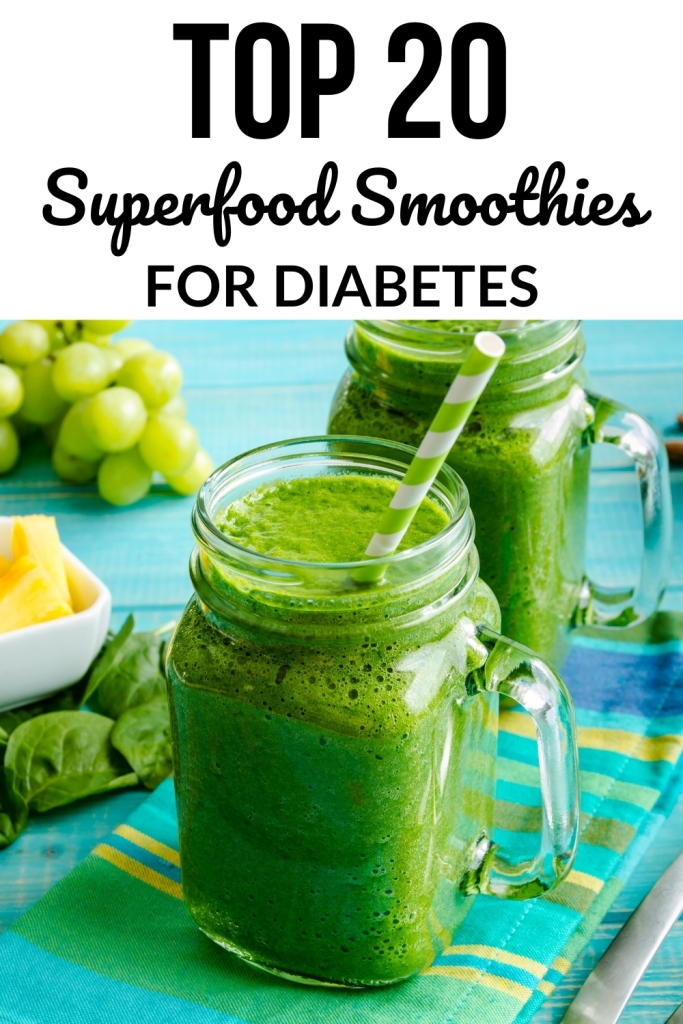
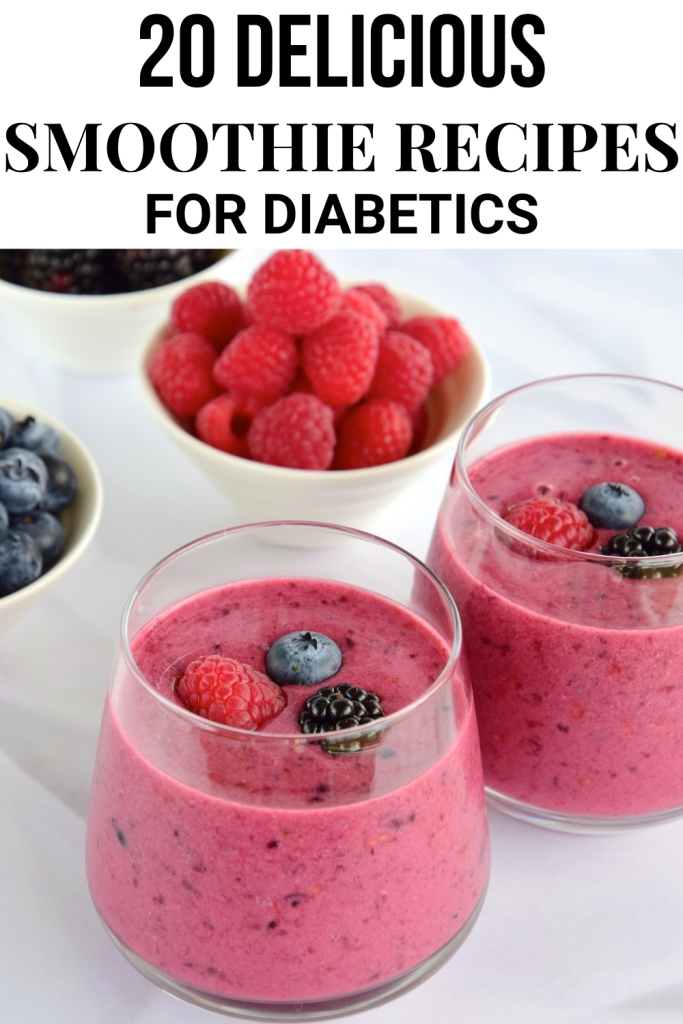



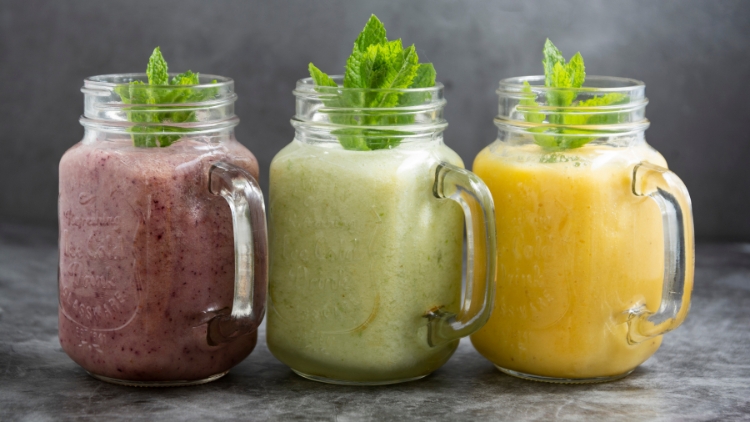
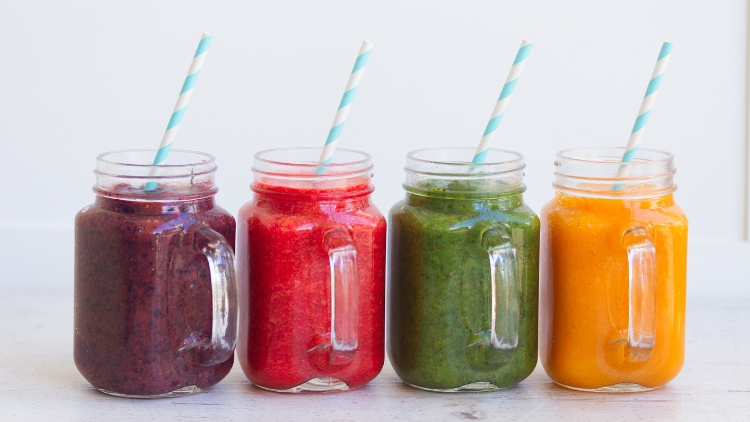

12 Responses
This is such a great resource! I’m always looking for new diabetic-friendly recipes. I’m a little confused about the “superfood” label, though. What exactly makes a food a “superfood,” and are they really that much better for you?
Hi Lisa, I’m glad you found the article helpful! That’s a great question about superfoods. The term “superfood” is more of a marketing term than a scientific one. It generally refers to foods that are packed with nutrients like vitamins, minerals, antioxidants, and fiber. While there’s no official definition, these foods are considered beneficial for overall health. They’re not necessarily a magic bullet, but they are nutrient-dense options that can be a part of a healthy diet, especially for people managing diabetes. Think of them as foods that give you a lot of bang for your buck, nutritionally speaking.
These smoothie recipes sound delicious, but I’m on a tight budget. Some of these ingredients, like chia seeds and almond butter, can be expensive. Do you have any tips for making these smoothies more affordable?
Hi Sarah, That’s a great point – healthy eating shouldn’t break the bank! You can definitely make these smoothies more budget-friendly. Consider buying frozen fruits and vegetables, which are often cheaper than fresh and just as nutritious. You can also look for sales and coupons on things like nuts and seeds, or buy them in bulk if you have the storage space. Plain yogurt can be used as a cheaper alternative to Greek yogurt. Also, don’t be afraid to substitute ingredients based on what you have on hand or what’s on sale. The most important thing is to focus on whole, unprocessed foods whenever possible.
Okay, these smoothies sound pretty good, especially the chocolate ones (I’m a chocoholic, what can I say?). But seriously, I’m always worried about fruit in smoothies because of the sugar. You mention sticking to ½ to 1 cup, but what if I have a really big blender? Does that mean I can make a giant smoothie and technically still be within the limit? Asking for a friend… who is also me. Also, cilantro in a smoothie? That’s a new one. Does it really not taste like soap?
Hi Patricia, thanks for your comment! I understand the chocolate cravings – who doesn’t love a good chocolate fix? Regarding the fruit and blender size, unfortunately, a bigger blender doesn’t give you a free pass to Smoothie Mountain. The ½ to 1 cup serving recommendation refers to the amount of fruit per serving, not the total volume of the smoothie. So, even if you make a giant smoothie, you still want to stick to that fruit limit for each serving you pour out. Otherwise, you might experience a blood sugar rollercoaster, which is no fun.
As for the cilantro, I know it can be a bit polarizing! Some people have a genetic predisposition that makes it taste soapy, but in small amounts, especially when blended with other strong flavors like avocado and lime, it adds a lovely fresh, citrusy note. It doesn’t usually taste like soap to most people in these recipes. But if you are one of the unlucky ones, parsley is a great substitute! Give it a try; you might be pleasantly surprised!
These are some interesting combinations! I’m always looking for ways to sneak more greens into my diet without, you know, actually tasting the greens too much. The “Mint Chocolate Green Smoothie” sounds promising – anything that disguises kale as a dessert is a win in my book. But I’m curious, what kind of protein powder do you recommend? There are so many out there, and some of them have added sugars or artificial sweeteners, which I’m trying to avoid. Also, for the nut butters, should we be using the natural kind (you know, the kind that separates and you have to stir vigorously) or is the no-stir kind okay? My arm gets tired just thinking about it.
Hi Linda, thanks for your comment! I totally get the “sneaking in greens” strategy – sometimes we need to be a little sneaky with our own diets! The Mint Chocolate Green Smoothie is indeed a great way to enjoy the benefits of greens without feeling like you’re chewing on a salad.
Regarding protein powder, I recommend looking for ones that are low in added sugars and artificial sweeteners. Whey protein isolate, casein protein, or plant-based protein powders (like pea or brown rice protein) are generally good options. Check the nutrition label carefully and look for products with minimal ingredients. As for the nut butters, natural nut butters (the kind you have to stir) are generally preferable because they usually don’t contain added sugars or oils. However, if the vigorous stirring is a deal-breaker (I understand the arm fatigue!), you can use no-stir nut butters as long as you check the ingredient list to ensure they don’t have added sugars or unhealthy oils. A little bit of extra stirring now and then is a small price to pay for good health!
Alright, “superfood smoothies” – sounds fancy, but is this just another one of those health fads? I’m a bit skeptical. And are these smoothies going to leave me feeling like I just ate a bowl of grass? No offense, but some healthy stuff tastes, well, like health food. Also, 20 recipes?! That’s a lot. Any chance you can highlight your top 3 for someone who’s just starting out?
Hi Ava, I understand your skepticism! There are definitely a lot of health trends out there. But “superfood” just refers to ingredients that are packed with nutrients. And trust me, these smoothies are designed to be delicious, not grassy! We’ve got flavors like chocolate peanut butter and raspberry cheesecake that are anything but boring. As for a starting point, I’d recommend the Strawberry Coconut Milk Smoothie, Blueberry Smoothie, and the Dark Chocolate Protein Smoothie. They’re all easy to make, taste great, and are a good introduction to the world of diabetic-friendly smoothies. Give them a try and let me know what you think!
Okay, I’m all for healthy eating, but I’m also on a budget. Are these “superfoods” going to require a trip to a specialty health food store that costs an arm and a leg? And let’s be real, I’m not a gourmet chef. Are these recipes complicated? My cooking skills are pretty much limited to making toast without burning it. Also, the disclaimer at the end – does that mean I can’t sue you if I don’t magically become a supermodel after drinking these smoothies? 😉
Hi Harper, I hear you on the budget concerns! Many of the ingredients, like spinach, berries, and bananas, can be found at your regular grocery store and are quite affordable. Frozen fruits are also a great budget-friendly option. And don’t worry, these recipes are definitely beginner-friendly! No fancy techniques required, just toss the ingredients in a blender and you’re good to go. As for the disclaimer, it’s just a standard reminder that I’m not a doctor and this information isn’t a substitute for professional medical advice. While these smoothies are healthy and delicious, they probably won’t turn you into a supermodel overnight! (But hey, one can dream, right?) Thanks for your questions!